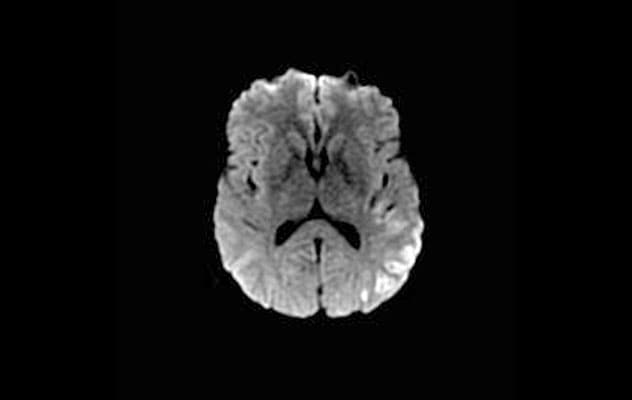Feb. 25, 2022
Mayo Clinic has launched a neurovascular care process for adults age 55 and younger who have strokes. Multidisciplinary specialists collaborate to determine stroke etiology and optimal treatment for these individuals.
"Having a stroke when you're at the peak of your productive life is devastating. Our objective is to provide holistic care that allows patients to go back to what they love to do," says Gyanendra Kumar, M.D., a vascular neurologist at Mayo Clinic in Phoenix/Scottsdale, Arizona. "We want them to be able to enjoy their families and return to the workforce — and we want to prevent future strokes."
The incidence of stroke in younger adults is increasing. The most common cause of stroke in this group is arterial dissection resulting from trauma. But inadequate treatment of conditions such as hypertension, hypolipidemia, obesity and obstructive sleep apnea also is likely to play a role.
"This is a multifaceted problem, and the etiology of these strokes varies," Dr. Kumar says. "Our approach relies on collaboration among experts in many specialties who can help patients get back to being the productive individuals they were before their strokes."
Comprehensive, efficient care
Before patients visit Mayo Clinic's young adult stroke group, a registered nurse specializing in stroke reviews their files and consults stroke neurologists to determine whether the patients should see additional specialists. Individuals with aneurysms are scheduled to see a neurosurgeon. Patients with a hypercoagulable disorder might see a hematologist. Patients with a suspected genetic syndrome might be referred to Clinical Genomics.
"We make every effort for patients to see all the providers they need in a single visit to Mayo Clinic," Dr. Kumar says. "This condition requires a careful and thoughtful approach. We take the time we need to consider what kind of investigations and consultations might benefit our patients."
As a major neurovascular center, Mayo Clinic has state-of-the-art imaging to help precisely determine stroke etiology and risk. Carotid plaque imaging facilitates the detection of specific carotid plaque components — including intraplaque hemorrhage — that are associated with ischemic events, even in patients with minimal luminal stenosis. Mayo Clinic neuroradiologists also have experience performing and analyzing cerebral angiograms.
تحديد سبب الإصابة بالسكتة الدماغية

تحديد سبب الإصابة بالسكتة الدماغية
تصوير بالرنين المغناطيسي لدماغ رجل يبلغ من العمر 39 عامًا يبين الإصابة بسكتة دماغية حادة في الفص الصدغي الجداري الأيسر. وكان هذا المريض يتمتع بصحة جيدة، وفجأة أصيب باختلال في اللغة مصحوبًا بوخز وخَدَر في قدمه اليمنى. وأُعطي المريض منشط البلازمينوجين النسيجي، وخضع لملاحظة دقيقة في وحدات مايو كلينك للعناية المركزة والسكتة الدماغية. وكشفت الفحوص اللاحقة أن سبب إصابة المريض بالسكتة الدماغية وجود ثقبة بيضوية سالكة كبيرة في التحويلة من اليمين إلى اليسار. وخضعت الثقبة البيضوية السالكة للترميم في مايو كلينك.
When needed, treatment is provided by interventional neuroradiologists and neurosurgeons with experience in the range of procedures available to help prevent future stroke. Patients with cardiac conditions, such as patent foramen ovale, are treated by Mayo Clinic's cardiothoracic surgeons. "As colleagues, we have a collaborative approach to patients. There's no turf war," Dr. Kumar says.
Specialists in Neuro-Ophthalmology and Physical Medicine and Rehabilitation provide rehabilitative care after stroke. Occupational therapists also help patients with tasks such as regaining the ability to drive.
Outcomes vary, depending on the severity of the stroke. "After a massive stroke, individuals may remain limited in what they can do," Dr. Kumar says. "But despite having a stroke that causes initial impairment, many of these younger patients are able to regain their abilities."
For more information
Refer a patient to Mayo Clinic.